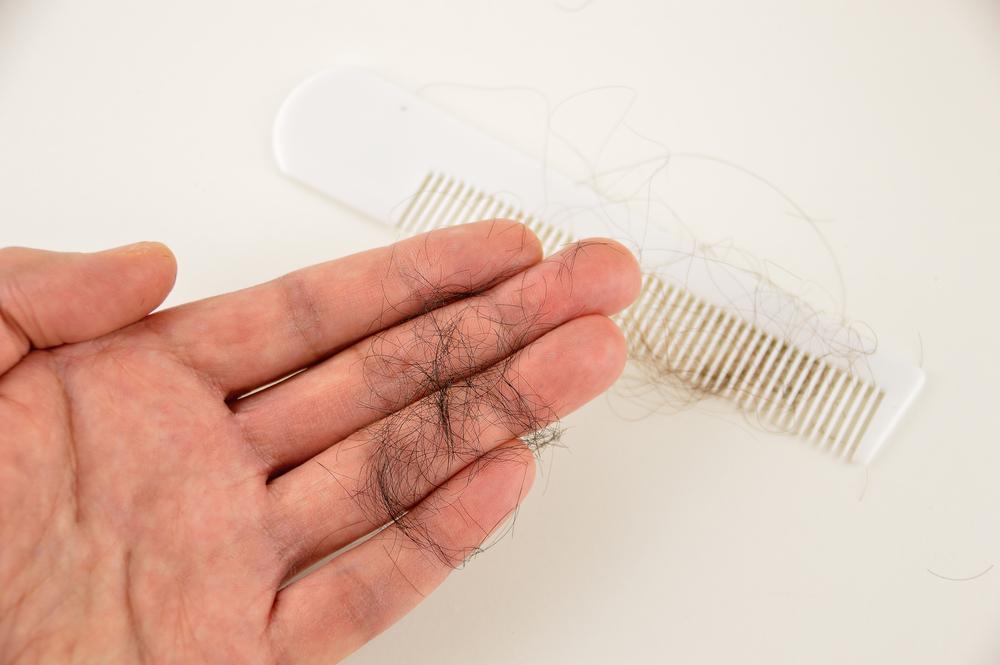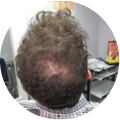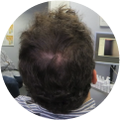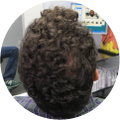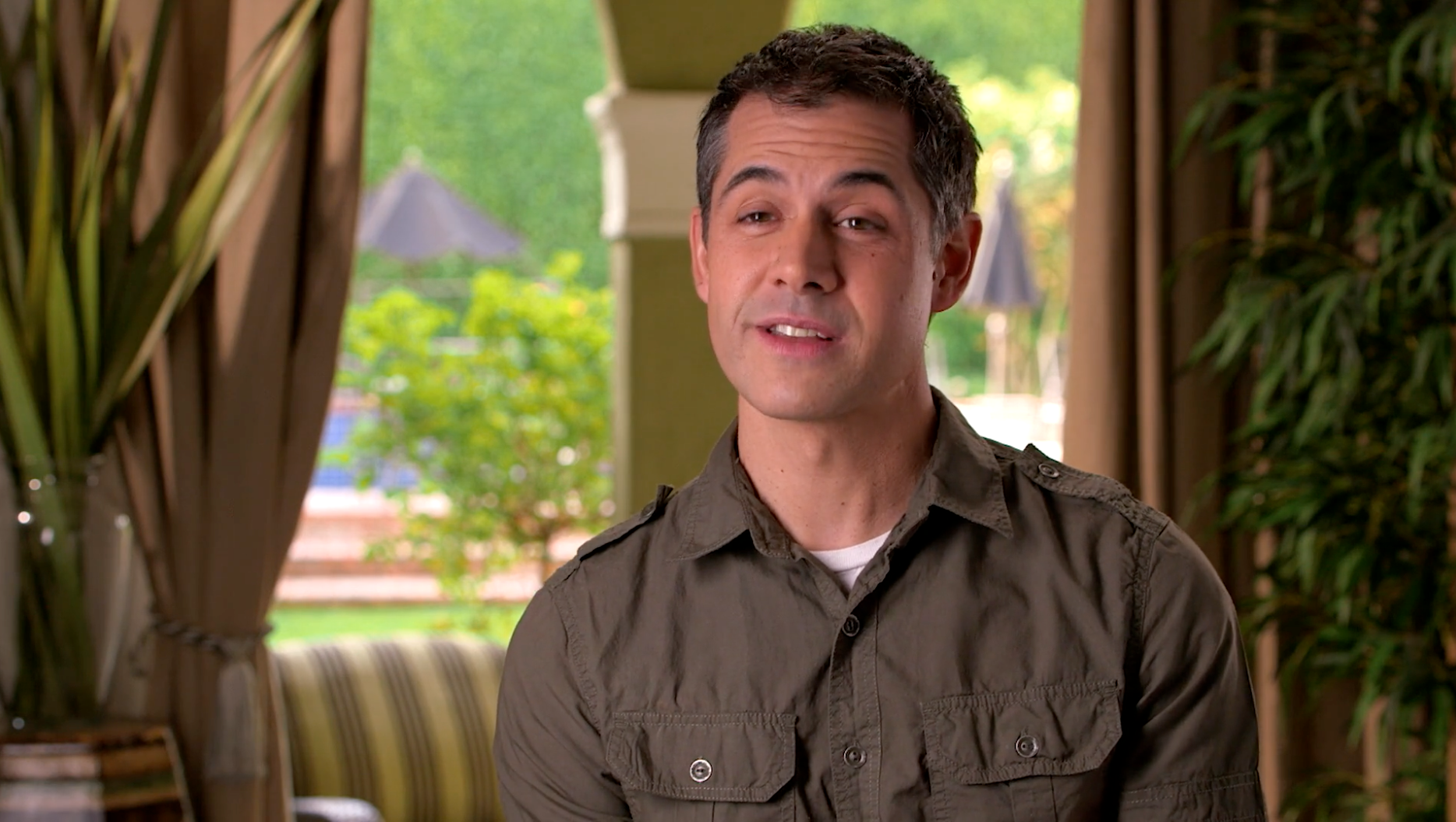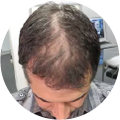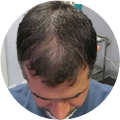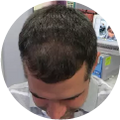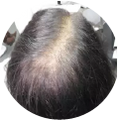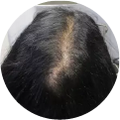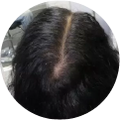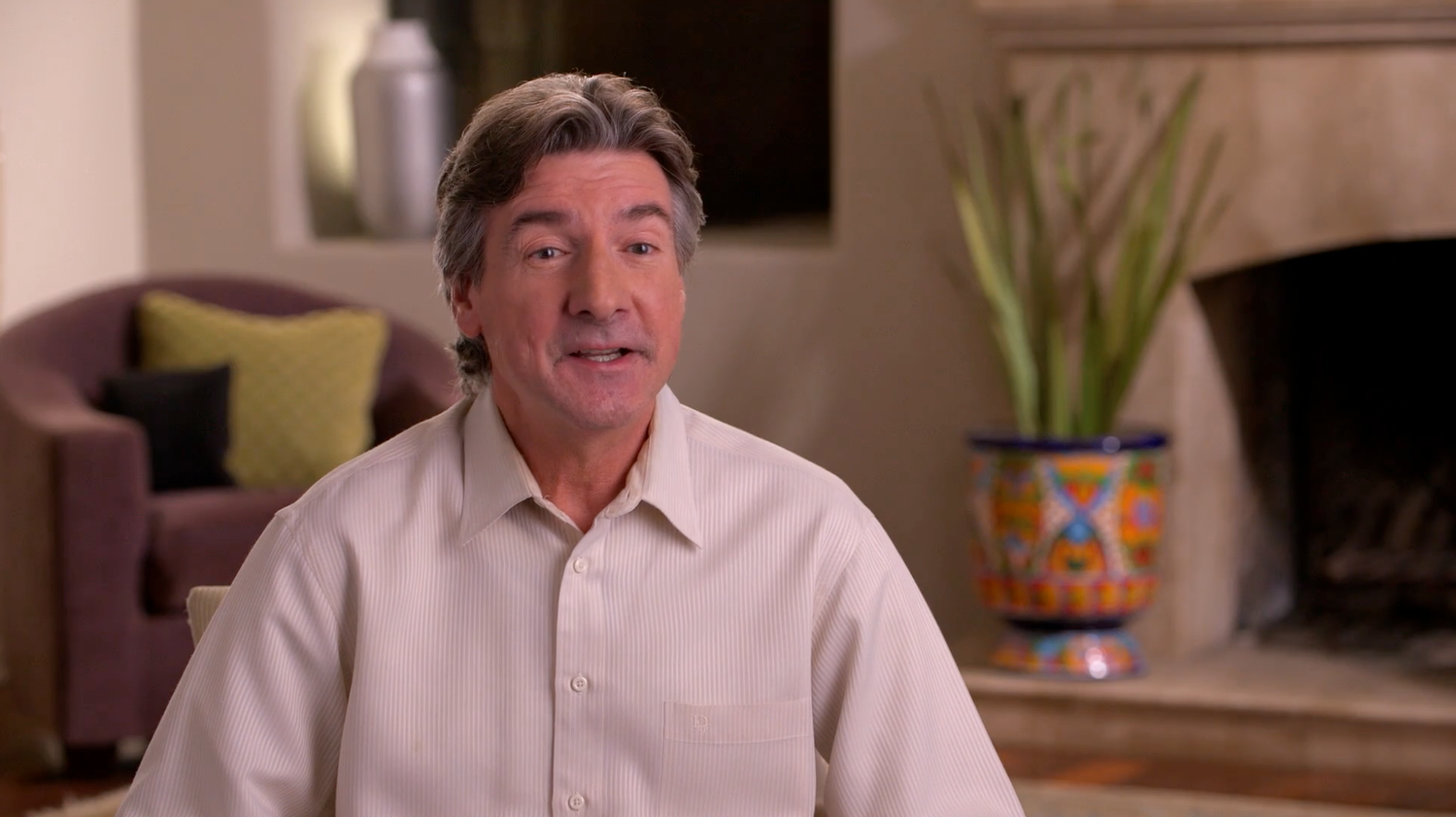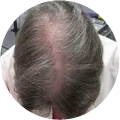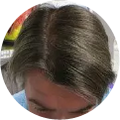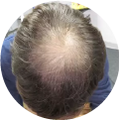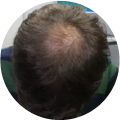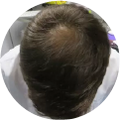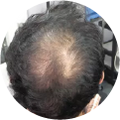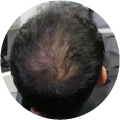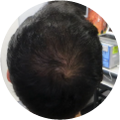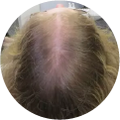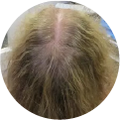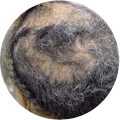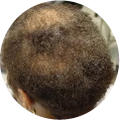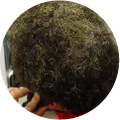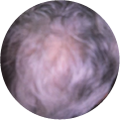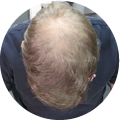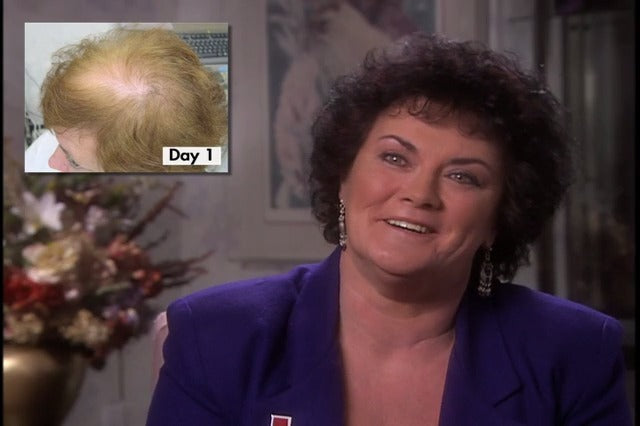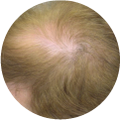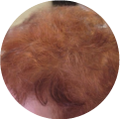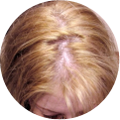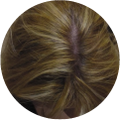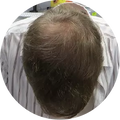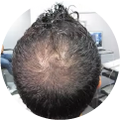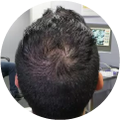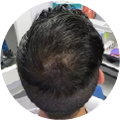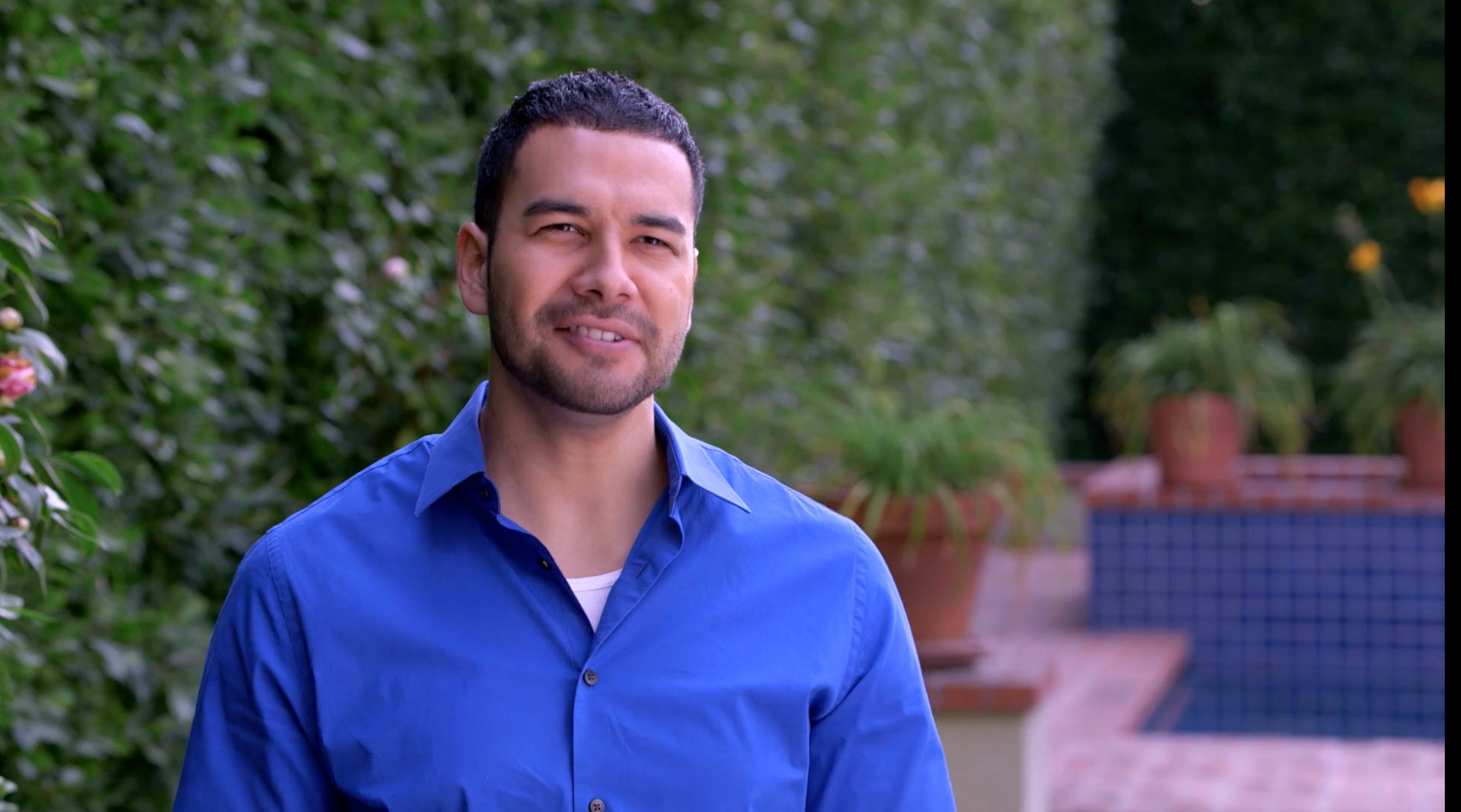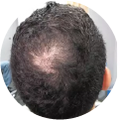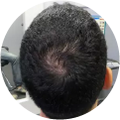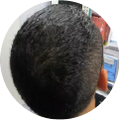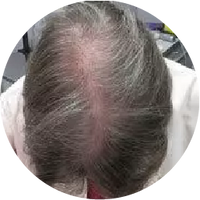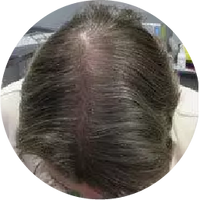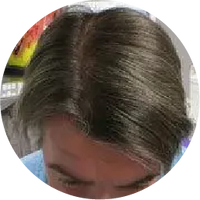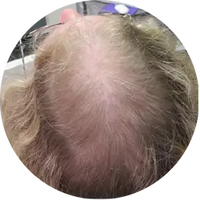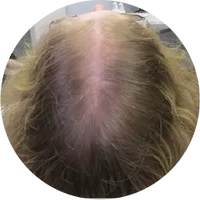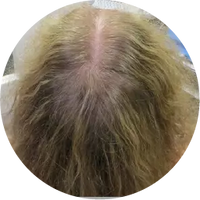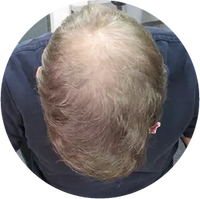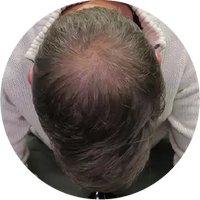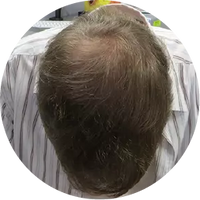
Hair loss can feel embarrassing and foster a sense of bewilderment at why it is happening and when it will stop. When you begin to lose your hair, finding the cause of the hair loss is the first step to being able to regrow lost hair and stimulate the growth of new hair follicles. In order to correctly identify which type of hair loss is the most likely culprit, it is necessary to understand the most common types of hair loss. Anagen effluvium is a distinct type of hair loss, but it is often confused with telogen effluvium. We have put together a guide to help you develop the foundational understanding needed to understand anagen effluvium, recognize the differences between telogen effluvium and anagen effluvium, potential anagen effluvium treatments, and the most common causes of this condition.
Anagen Effluvium Treatments
Before delving into what anagen effluvium is and how it is treated, it is vital to understand the three phases that comprise the hair growth process. The three phases of the hair growth cycle are anagen, catagen, and telogen. If any of these phases are disrupted or compromised, the hair growth cycle is subsequently affected. Below is a breakdown of what processes are taking place in each hair growth phase.
- Anagen:Anagen is the active growth phase of the hair growth cycle. During this phase of hair growth, the cells that form the root at the base of the hair undergo rapid division that results in the production of new hair on the surface of the scalp. The anagen phase is distinct because of this fast-paced and continual splitting of the cells in the root at the base of the hair. The new hair that is produced on the surface of the scalp as a result of this cell division replaces a club hair, which is a hair that is no longer in the anagen phase and will not grow. Most individual’s hair will grow one centimeter per month when in the anagen phase of the hair growth cycle; however, this fluctuates from person to person.
- Catagen:Catagen is the second phase of the hair growth cycle and is known as the transitional phase. The catagen stage of hair growth is the phase during which a hair is no longer in the active growth phase, which causes the outer root sheath of the hair to shrink in size and join with the root of the hair. This process is how a club hair is formed. On average, the catagen phase lasts between two to three weeks.
- Telogen:Telogen is the final phase of the hair growth cycle and it is the resting phase of the process. During the telogen phase, the hair follicle is not actively growing and is considered to be at rest. This process begins once the formation of the club hair during the catagen phase has been completed. Once it is a club hair, the hair follicle enters a period of dormancy. During the telogen phase, natural shedding of the hair follicles occurs, with roughly twenty-five to one hundred hairs being shed per day. At any given time, roughly eight to ten percent of the hairs on the surface of the scalp are in the telogen phase of the hair growth cycle. On average, the telogen phase of the hair growth cycle lasts between one and four months and varies greatly between individuals and even between each hair. The telogen phase ends when a new hair is formed and successfully uproots the club hair, which restarts the hair growth process.
With this understanding in mind, it is now possible to analyze what anagen effluvium is and how it compares to telogen effluvium. Anagen effluvium is a condition that causes extensive hair loss due to a sudden disturbance to the matrix cells of the hair follicles. The hair is not shed during anagen effluvium; instead, it is lost due to a fracture of the hair shaft at the scalp. As discussed above, the anagen phase of the hair growth cycle is the only phase in which hair growth takes place. When anagen effluvium occurs, the rapid cell division at the shaft of the hair that characterizes the anagen growth phase is diminished significantly due to injury to the keratinocytes in the hair matrix. This damage to the keratinocytes results in a slowed rated of metabolic activity in the hair shaft during the growth phase. Due to the rapid decline in the cell division at the hair shaft, the hair shaft becomes thinned and weakened, which greatly heightens its susceptibility to fracture with only minimal trauma once it reaches the surface of the scalp. On average, the actual breakage of the hair follicle occurs within a few days or up to three weeks after the hair follicle has been injured. Upon examination, the hair follicle will display a dystrophic hair shaft that appears to rapidly taper, sometimes referred to as bayonet hair.

Analyzing anagen effluvium vs. telogen effluvium is vital for those who believe they may be experiencing one, or both, of these types of hair loss. Telogen effluvium occurs when there is a significant increase in dormant, telogen stage hair follicles, which results in a notable increase in hair shedding. One of the primary differences between anagen effluvium and telogen effluvium is that in anagen effluvium the hair loss is occurring due to breakage of the hair shaft, rather than the hair follicle shedding. Another difference is that while hair loss in anagen effluvium occurs days to weeks after injury to the follicle, hair loss due to telogen effluvium takes place three to four months after the systemic issue takes place. Another notable difference is that since a much higher percentage of the hairs on the scalp are in anagen phase at any given time, anagen effluvium can involve up to ninety percent of the hairs on the head. Comparatively, telogen effluvium rarely affects more than fifty percent of the hairs on the head since on average only ten percent of the hairs on the surface of the head are in telogen phase at any given time. When anagen effluvium takes place, it does not affect the roughly ten percent of hairs in telogen phase since they are mitotically inactive.
Treating anagen effluvium begins with identifying the cause of the hair loss. There is a trigger that has thrown the anagen phase of the hair growth cycle into an abnormal pattern of hair loss, and identifying and removing this trigger is the most important step to successfully treating anagen effluvium. For some, the environmental irritator that is causing the anagen effluvium may not be able to be removed, such as in the case of chemotherapeutic drugs, and in these cases then alternative avenues of treatment must be explored to try to stimulate successful hair growth. For some individuals, it can be effective to utilize a topical minoxidil product as this will help shorten the period of baldness due to the hair loss. Any treatment option that is considered must be reviewed and approved by a licensed physician to ensure it will not interact with any medications or treatments, particularly those that are causing the anagen effluvium occurrence.
Anagen Effluvium Causes
Early detection and treatment of anagen effluvium will aid in limiting the amount of hair lost and the extent of the damage. In order to successfully identify and treat anagen effluvium, it is important to know common anagen effluvium symptoms. The most dominant symptom of anagen effluvium is unexplained hair loss. Depending upon the severity of the anagen effluvium, this hair loss can encompass up to ninety percent of the hairs on the head and may mimic the appearance of alopecia areata in some cases. The presentation and severity of anagen effluvium varies on a case-by-case basis, but all instances of anagen effluvium possess the onset of unexplained hair loss, which may worsen in severity over time. For many individuals, hair loss will begin within two to three weeks of exposure to the substance or treatment that is causing the change in cell division during the anagen phase of the hair growth cycle. However, this hair loss often becomes much more apparent one to two months after exposure to the substance or treatment causing the onset of the anagen effluvium.
Anagen effluvium can be a difficult and embarrassing occurrence for an individual to endure, but identifying the root cause for the onset of the hair loss is vital to selecting the right treatment option and beginning to heal the fractured anagen hair growth phase. When delving into anagen effluvium causes, it is important to understand that the cause of this type of hair loss varies from individual to individual and requires a comprehensive analysis of all medications, treatments, and lifestyle choices being made to correctly pinpoint the environmental irritator. When visiting a doctor to seek a diagnosis, they will often request a full dermatologic, systemic, and family history in order to assess what the possible causes of the anagen effluvium are, and whether or not it is a different type of hair loss entirely. Often this step is the key to finding the right treatment option for the patient and is reliant on the unique environmental and biological factors inherent in the individual’s life. At this stage, many doctors first look to see if the individual is undergoing any type of cancer chemotherapy or radiation therapy.
Anagen effluvium is most often caused by cancer chemotherapy and radiation therapy. Both cancer chemotherapy and radiation therapy are extremely difficult for the body to endure and cause a number of ancillary side effects, anagen effluvium among them. Cancer chemotherapy and radiation therapy may not be possible to discontinue as they are often used as treatment options for life-threatening conditions. While it may not be possible to discontinue use, it may be possible in some cases to change the type of chemotherapy being undergone or to reduce the amount of radiation therapy, but this is often not the scenario many suffering from anagen effluvium experience. For those undergoing chemotherapy or radiation therapy and experiencing anagen effluvium as a result of their treatment, it is often best to explore other avenues of treatment that will offset the severity of the hair loss. As mentioned above, for some patients a topical minoxidil product may be a promising treatment option to slow the amount of hair loss occurring. Topical minoxidil products, such as ScalpMed, have proven to be successful in combatting both hereditary and non-hereditary hair loss and stimulating new, healthy hair growth. To find the right treatment product, be sure to target a proven effective method that is capable of combatting anagen effluvium and has minoxidil as a primary ingredient.
While cancer chemotherapy and radiation therapy are the most common causes of anagen effluvium, there are a number of other potential causes for anagen effluvium. Anagen effluvium can occur due to heavy metal intoxication, certain diseases (pemphigus, discoid lupus erythematosus, etc.), poisoning from exposure or ingestion of a toxic plant, loose anagen syndrome, or compulsive hair pulling (trichotillomania). These types of anagen effluvium are different than anagen effluvium resulting from cancer chemotherapy or radiation therapy because they result in immediate hair loss. With cancer chemotherapy or radiation therapy, the anagen effluvium is often delayed several days to weeks. In addition, these types of anagen effluvium often result in the entire hair shaft, including the root sheaths, being shed. Those experiencing alopecia areata are also sometimes more susceptible to developing anagen effluvium, so it is important to consult a licensed physician to correctly identify the cause of the anagen effluvium.

Seeking the consultation and care of a licensed physician early in the process will be integral to successfully combatting anagen effluvium. While for some there may be no clear path to reversing anagen effluvium due to the presence of other diseases and conditions, there are many alternative avenues of treatment to explore in coordination with a knowledgeable medical team to help offset or lessen the occurrence of hair loss.












